The Queen Erupts!
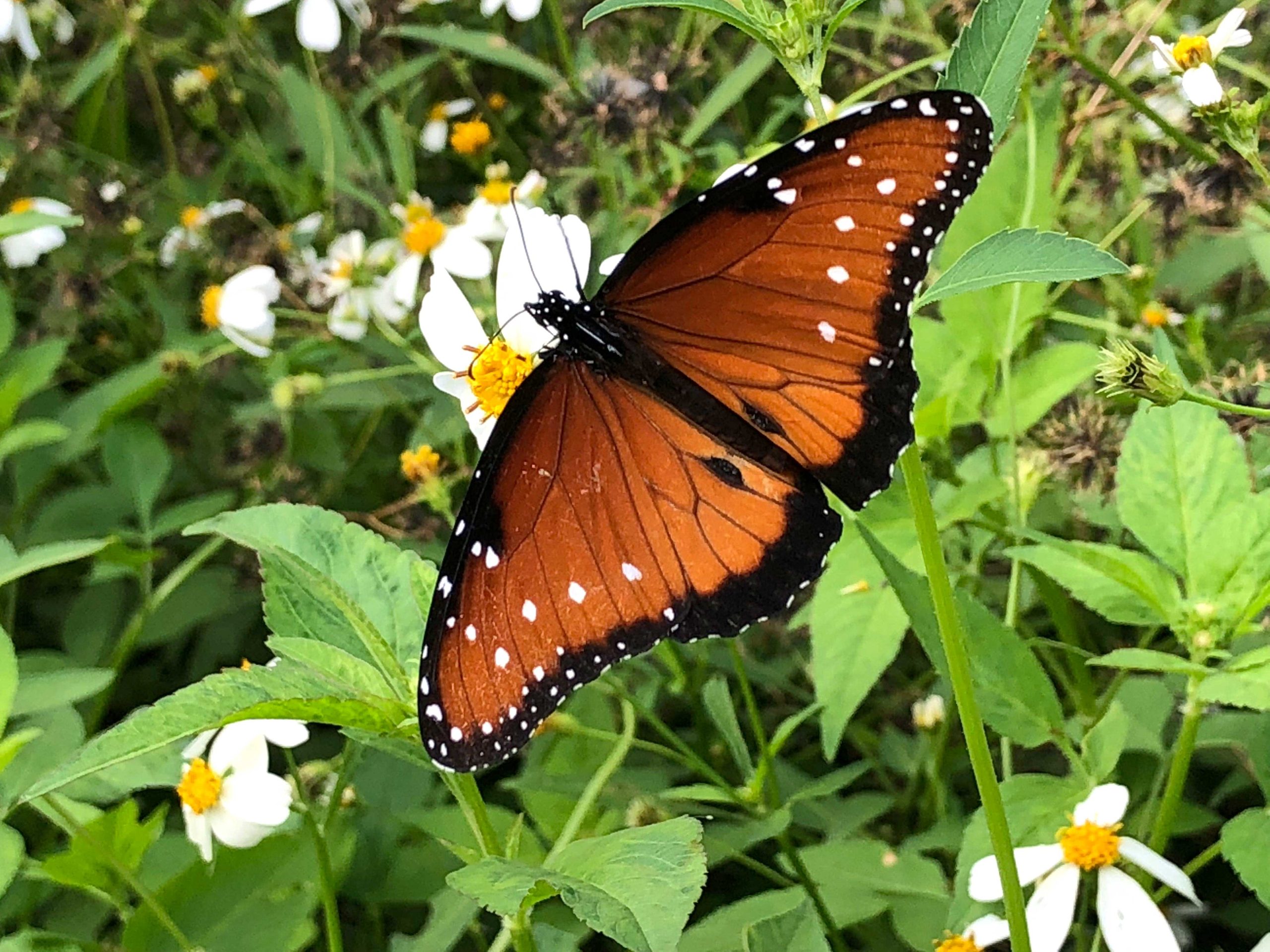
I am seeing queen butterflies all over the park. I cannot stress how unusual this is. iNaturalist records 331 reports of queen butterflies in Texas last year between October 1 and November 6. This year, for the same period, we have had 1036 reports, a more than 300% increase.
Inside the Loop Houston had zero sightings last year and I’ve seen more than five myself this week alone.
It’s important to note that iNaturalist data is a simple tally of reports to the service, but the upsurge in reporting is a good indicator that something is going on. The queen butterfly doesn’t range very far north and in Texas, is usually found in the southern and central counties.
Perhaps there has been sudden expansion of the butterfly’s range or, more likely, this is an eruption (a period of sudden and temporary appearance of a species outside its normal range). Only time will tell. But since they are here now, keep your eyes peeled. They may not be back any time soon.
Queen butterflies look remarkably similar to monarchs and they are closely related. Even their caterpillars and chrysalises look alike. Use the photos accompanying this post to familiarize yourself with what a queen looks like because you are likely to run into one if you visit the Park.
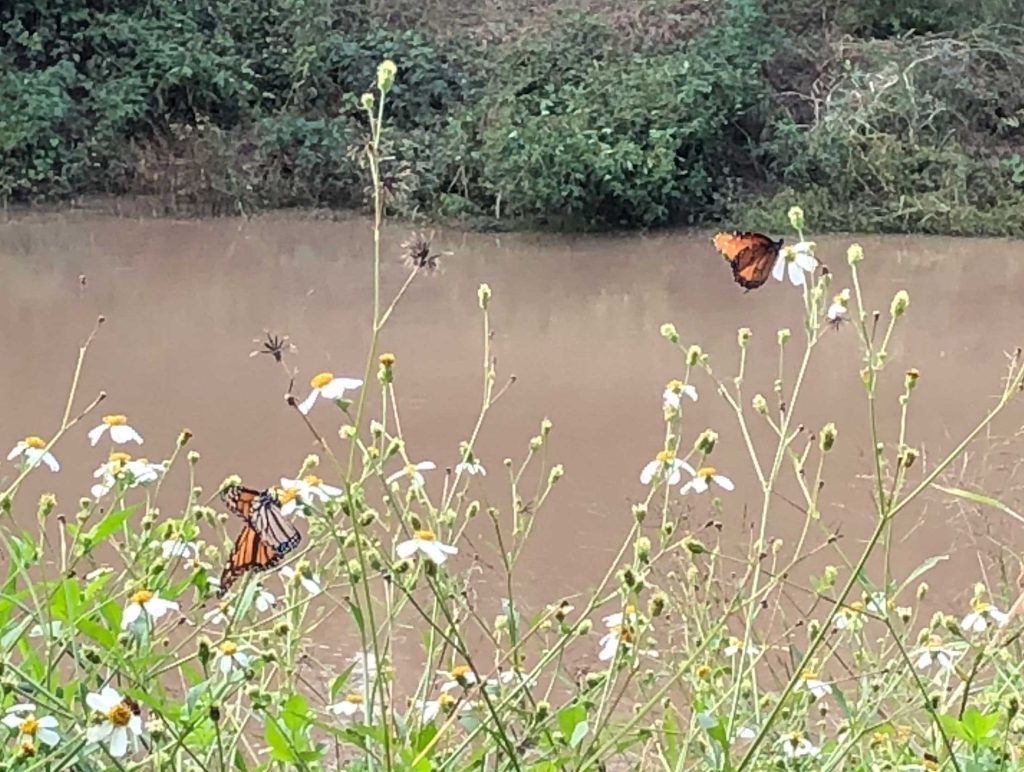
The butterfly on the left is a monarch. On the right is a queen.
The queen is one of only two milkweed butterflies we see in this area. The other is the familiar monarch. Both lay their eggs on milkweed and that is the only food source for their caterpillars. Milkweed is toxic when eaten, but monarchs and queens are immune from its effects. Not only can they eat milkweed, they take the toxin that makes the plant poisonous in the first place and store it in their bodies, making them similarly toxic! Queen butterflies contain much less toxin than monarchs but they make up for that with a trick of their own.
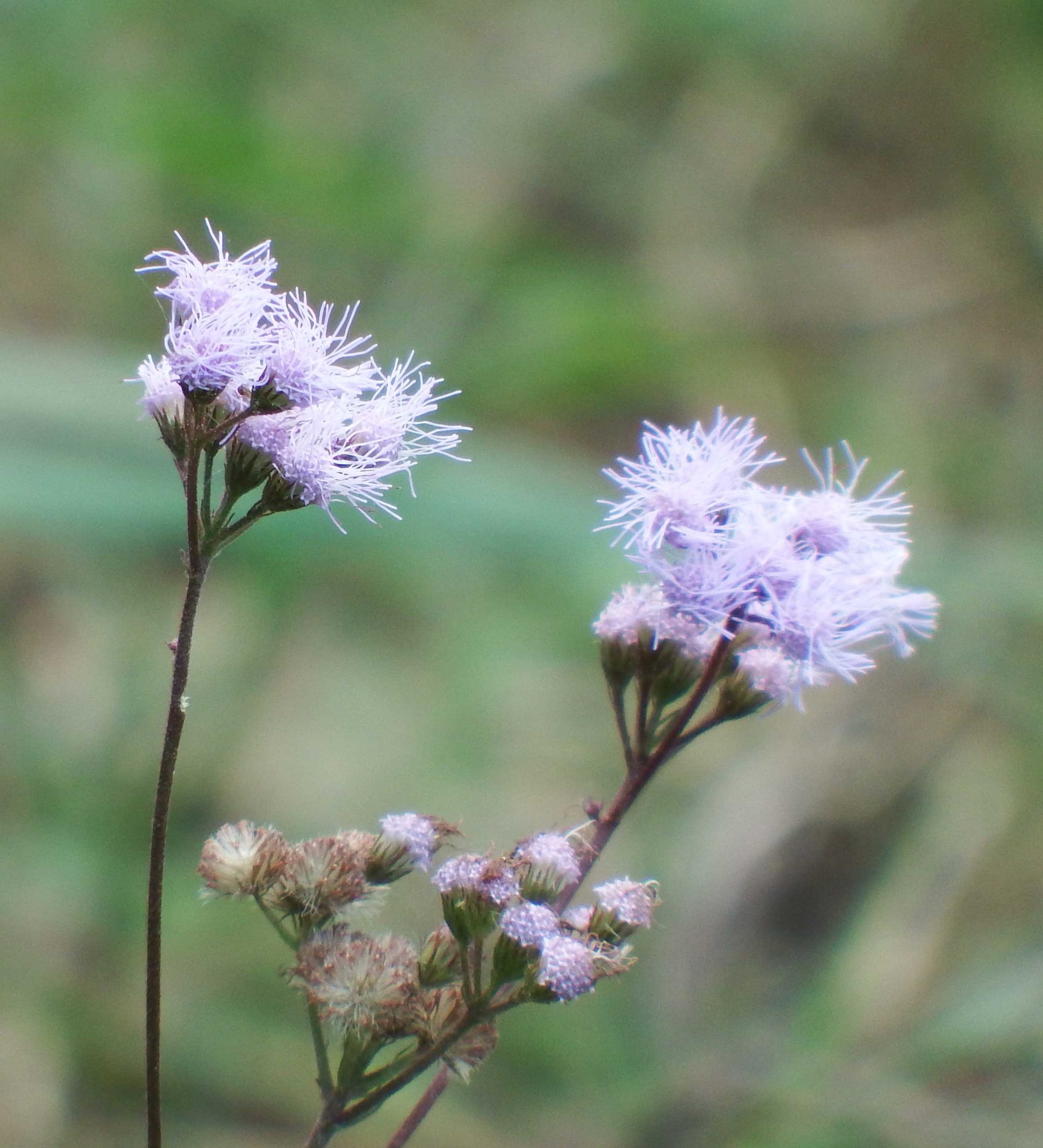
Blue mist flower
Male queen butterflies feed on the nectar of plants containing pyrrolizidine alkaloids (PA), a toxin that attacks the liver. Plants use the compound to protect themselves from grazing animals. Male queens use the compound to create a pheromone that attracts female queen butterflies. The photo at the top of the post shows the scent glands of the male queen. They are the two dark ovals near the body close to the bottom of the wing.
During copulation, the male passes a packet of the PA-derrived poison to the female who incorporates it into her eggs, making them toxic!
A great source of PA-laced nectar is the blue mist plant. It’s blooming now in our Park. So if you want to find a queen butterfly, in addition to checking out the Bidens alba, take a look at those mist plants.
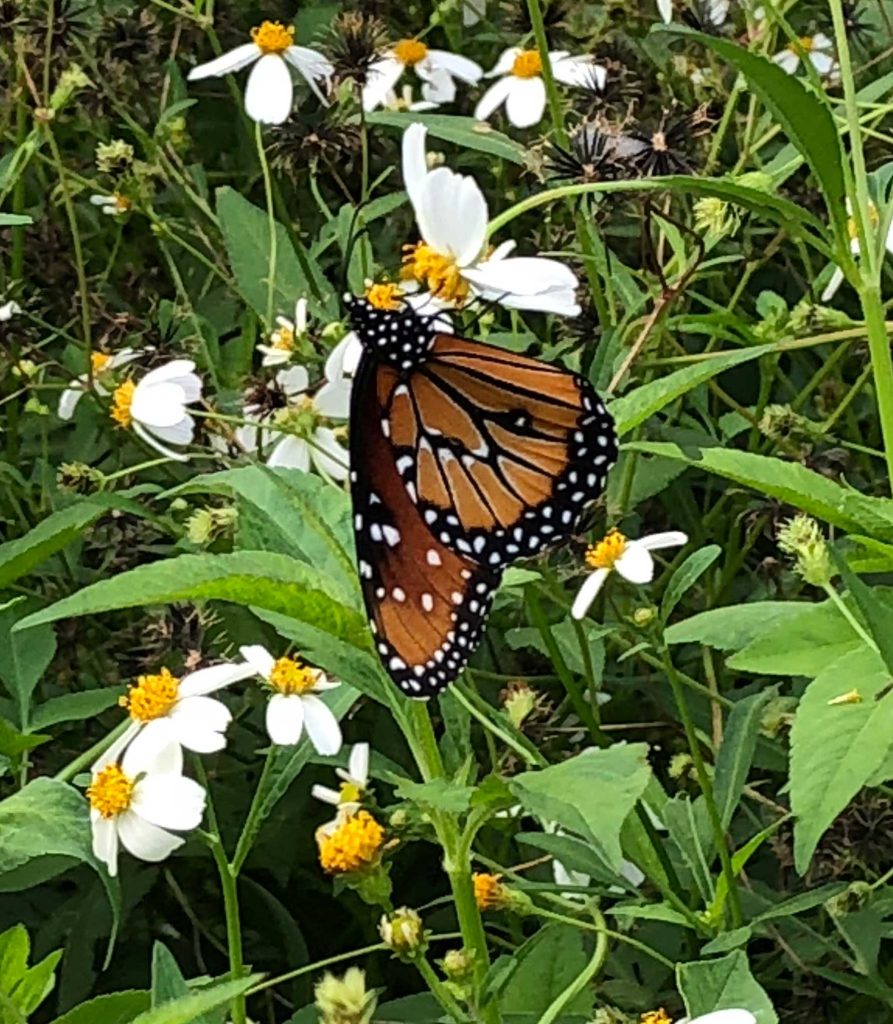
This is a queen butterfly looking a lot like a monarch. The underwing is full of dark veins, but the top wing, which you can see peeping out at the bottom lacks the monarch’s distinctive black lines.
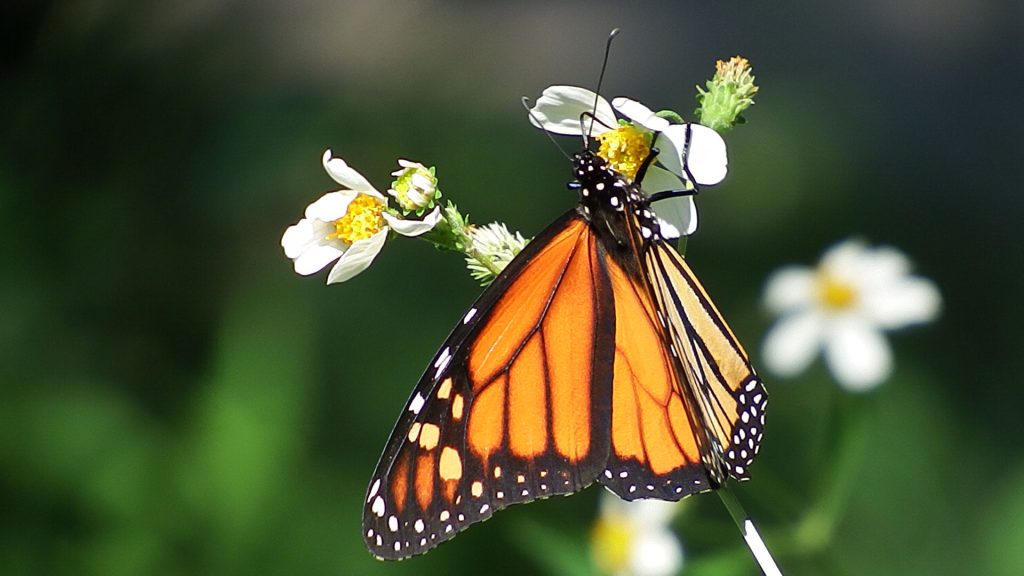
For comparison, this is a monarch butterfly. She is brighter orange and also has distinctive black veining on both sides of her wings.

